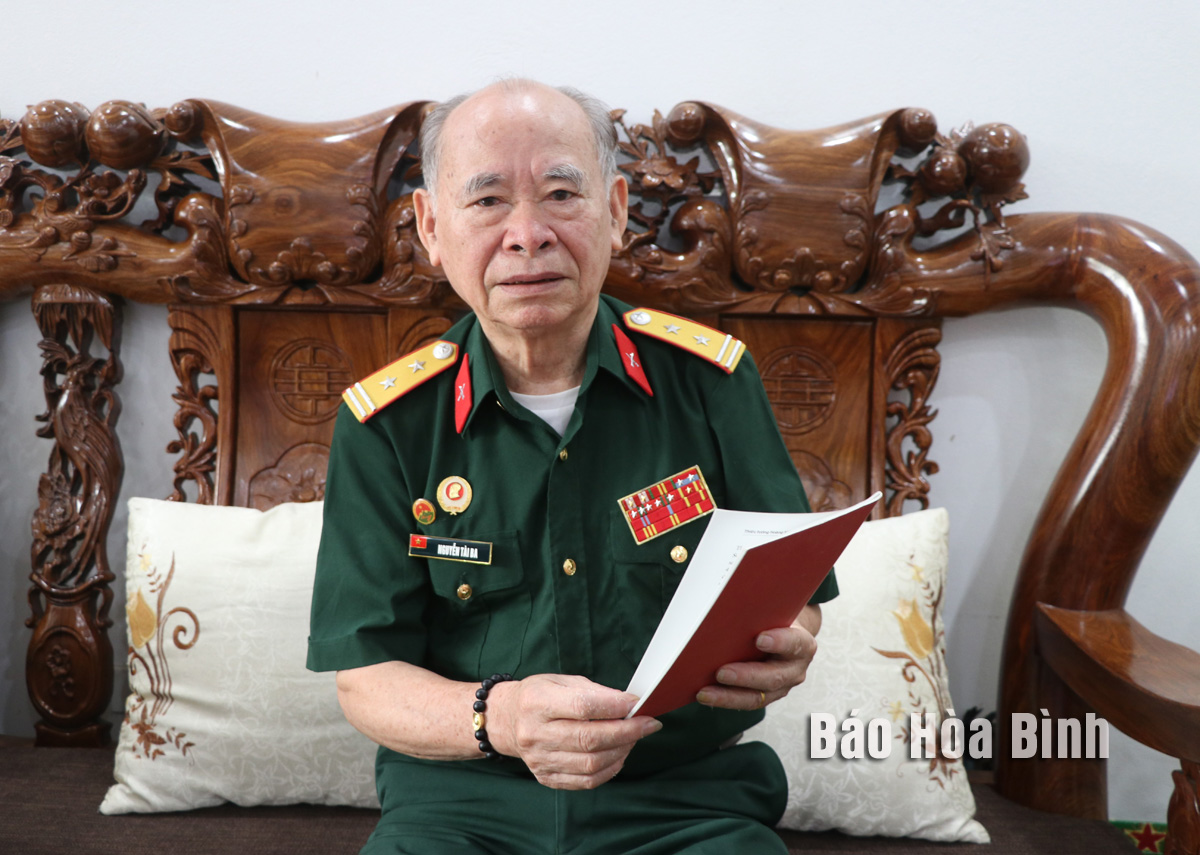
Lieutenant Colonel Nguyen Tai Ba, chairman of the Truong Son-Ho Chi Minh Trail traditional association in Hoa Binh province, and his comrades have recalled the days of building and protecting the arterial supply route for the southern battlefield as the Traditional Day of Truong Son Army Corps (May 19, 1959) is approaching.
Lieutenant Colonel
Nguyen Tai Ba, chairman of the Truong Son-Ho Chi Minh Trail traditional
association in Hoa Binh province.
Ba volunteered to join the army in 1962 when he
was only 18 years old. After three months of training in the northern province
of Bac Ninh, he and others marched southward.
He said to meet the requirements of the
resistance war against the US, the Politburo, the Party Central Committee and
President Ho Chi Minh on May 19, 1959 decided to open the strategic Truong Son
– Ho Chi Minh Trail.
Corps 559, whose name stood for May 1959 when
the trail was blazed, grew from 500 hand-piked men to a division-level unit on
October 23, 1961. It was tasked with opening the track in the Truong Son
jungle.
Recounting the hard-but-glorious decade-long
task, Ba said Vietnamese soldiers shot down enemy aircraft and used collected
bombs to pay the way through mountains to the South.
Truong Son soldiers and youth volunteers stayed
optimistic and ready to sacrifice their lives to protecting the Ho Chi Minh
Trail, which Ba said, was not only the large-scale supply route but also a big
battlefield spanning 11 Vietnamese provinces, seven southern Lao localities and
four northeastern Cambodia provinces, with a total length of nearly 17,000km.
The US launched more than 150,000 air strikes, with
tens of thousands of B52 sorties, and more than 4 million tonnes of bombs, more
than half of the bomb tonnage they pounded away across Vietnam, along with 120
raids and 1,235 commando operations. The bodies of more than 20,000 Truong Son
officers and soldiers have still remained on the battlefield, and 30,000 others
were injured.
The Ho Chi Minh Trail was considered an
indelible eight trigram formation in the jungle.
In the spirit of "Party members go first, the people follow”, all households of Party members in the Doan Ket sub-region in Da Bac town, Da Bac district, voluntarily removed gates and fences, and donated land when the road expansion project passed through their properties. Inspired by their example, 68 households in the sub-region quickly followed suit, contributing over 1,400 sq.m of residential and perennial cropland to widen the main road through the residential area. The exemplary role of Party members in Doan Ket stands as a shining example of studying and following President Ho Chi Minh’s thought, morality, and lifestyle.
The Hoa Binh provincial People's Committee held a monthly meeting on May 29 to assess the implementation of socio-economic development tasks in the first six months of 2025, the progress of key projects, and some other important issues.
During his lifetime, President Ho Chi Minh always expressed his deep affection and special concern for children and youth. He once emphasized: "Caring for and educating children well is the responsibility of the entire Party and the entire people”; "First of all, the family (i.e. grandparents, parents, siblings) must do this job well”. "the Party Committees…, the Children’s Committee, the Youth Union, the education sector, and all related organizations must have specific plans to ensure children grow healthier and more progressive”. His teachings has been remaining valuable and serving as the guiding principles in the work of protecting, caring for, and educating children. In line with this ideology, Hoa Binh Province has continuously been prioritizing and investing resources in the well-being of children in recent years.
Mr. Nguyen Phi Long, the alternate Member of the Party Central Committee and Secretary of the Provincial Party Committee chaired the meeting of the Standing Committee of the Provincial Party Committee to provide opinions on several investment projects within the province. There was the attendance of Ms. Bui Thi Minh, the Permanent Deputy Secretary of the Provincial Party Committee and Chairwoman of the Provincial People’s Council; Mr. Bui Đuc Hinh, the Deputy Secretary of the Provincial Party Committee and Chairman of the Provincial People’s Committee and other members of the Standing Committee; the leaders from other departments, agencies, and some localities.
The Standing Board of the Vietnam Fatherland Front (VFF) Committee of Hoa Binh province held a meeting on May 28 to honour outstanding village elders, village heads, and reputable individuals from local ethnic minority and religious communities.
In mid-May, the provincial Museum organised an exhibition named "Duoi la co Dang Cong san Viet Nam quang vinh” (Under the flag of the glorious Communist Party of Vietnam). This meaningful activity took place in the joyful atmosphere to celebrate the country's major holidays and the Party congresses at all levels for the 2025-2030 term, towards the 14th National Party Congress.



